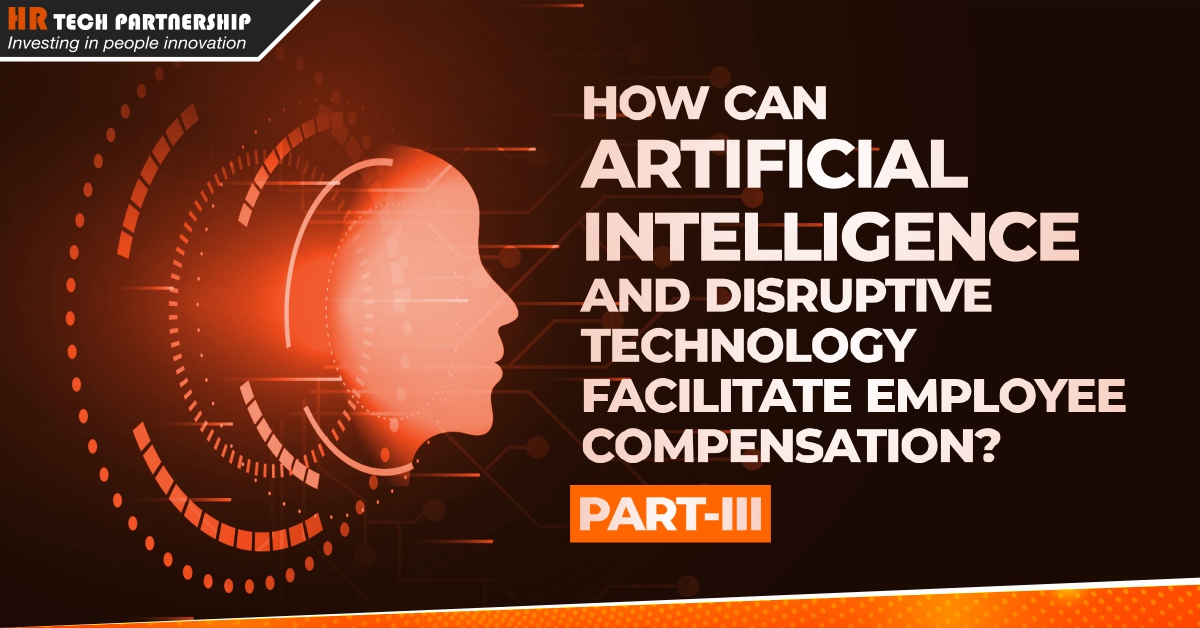A blog by Gabriel Barnes
As has been discussed in previous blogs in this series, the advent of the coronavirus crisis was a watershed moment for employee wellness, with business leaders putting the psychological, physical, and financial safety of their workforces at the heart of their decision making. The introduction of the Furlough scheme, the rise in voluntary executive pay cuts, and the implementation of changes to long term financial incentive plans have been just a few ways in which leaders have been grappling with the quandary that is employee pay and compensation. With the IMF now projecting global growth at -4.9%, it is clear that this is an issue that is here to stay.
The use of Artificial Intelligence and digital solutions to facilitate pay and reward schemes within an organisation has obvious advantages, as they are flexible, agile, and cost-effective. Importantly, they can integrate smoothly with pre-existing IT systems, but bring the benefit of being able to provide predictive analytics from real-time data.
How is AI currently being used in pay and compensation?
At its core, the organisation of pay and compensation has stayed the same, and it is unlikely that the world of HR will ever see a divergence from this at the structural level. Employee pay and compensation tends to be comprised of the following:
- Annual pay, which generally remains the same year on year,
- A yearly financial incentive of some kind,
- A longer, multi-year financial incentive. This would have traditionally been a pension scheme.
Despite this, Artificial Intelligence and disruptive solutions have been introduced, in a variety of forms, as facilitators of the decisions and the processes involved in pay and compensation.
-
- Web scraping is one task that can be performed by Artificial Intelligence to make searches for relevant data more efficient. These tools can assist HR leaders with peer group selection to ensure the highest level of accuracy when an organisation is looking within its peer group for a benchmark for pay parity. They also have the capacity to scrape for talent, giving leaders a better sense of the origins of their talent at the point of hiring, and their destinations when they leave.
- There are wide-ranging applications for machine learning in pay and reward schemes. For example, tools based on Artificial Intelligence can make automated job evaluations and produce comparative results on the quality of work, collating data in numerous forms from numerous sources. This process, which would have ordinarily taken huge amounts of time and required significant manpower, can be performed in a matter of minutes by these programmes.
- These digital solutions have begun to be made available to employees at all levels within organisations. Certain tools have been used to make decisions about whether an individual should be awarded a premium, by analysing levels of efficiency, for example.

The future of AI in pay and compensation
In the future of work, Artificial Intelligence and disruptive technology will begin to support and facilitate employee pay and compensation in even more advanced ways. This might include, for example, changes to the way in which pay equity is ensured. Tools based in Artificial Intelligence will be introduced to analyse cohorts of employees and report on behaviors and policies which are acting as barriers to pay equity. This will lead to greater transparency surrounding managerial bias during the hiring process. This is an example of an area of HR which is necessarily ‘human’, but which will no doubt be supported and simplified greatly by digital solutions.Another significant development for Artificial Intelligence in pay and compensation will be an improvement in the quality of data analysis. Currently, whilst predictive analytics are common, they are mainly based on historic data, and used primarily for administrative tasks. There will therefore be a shift towards the use of predictive analytics based on real-time and crowdsourced data, which will be employed to enable all aspects of pay and compensation. Other anticipated developments include –- Disruptive solutions that facilitate workforce organisation in a more agile way. These will help to make job evaluations and the management of people costs more efficient.
- Changes to how pay and reward cycles are managed. This area will see far greater flexibility, with individuals working for fewer hours or days based on their preferences and needs, and the likely rise in the number of people employed on a temporary basis. Digital solutions will make this possible.
- The streamlining effect which Artificial Intelligence will have on employee compensation, benefits, and financial wellness. Employees will be able to access tools that can help them to get to grips with their compensation and manage any financial stress they might be experiencing.
- The use of intelligence from Organisation Network Analysis given that almost all communication within organisations is now happening online. It can enable organisations to harness data from these employee interactions and predict issues and concerns around pay and reward.
Technology such as Blockchain, to enable flexible payment, and push notifications and gamification, to ensure and manage employee engagement, will become increasingly prominent as this evolution takes place.

Introducing AI in a practical way
Initiatives to introduce solutions based in Artificial Intelligence can have a transformative effect on the agility and efficiency of employee pay and compensation. The prospect of making these changes does not have to be intimidating. Once data science that supports the case for the implementation of these solutions is acquired, it is possible to pilot them on a small scale and in a low-risk way – for example, in small teams, or in one small area of pay and compensation.
The HR TECH Partnership (HRTP) runs a human capital digital innovation hub which can facilitate this low-budget innovation in HR so that leaders do not have to make large commitments in the first instance.

